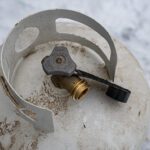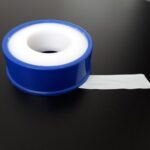How Tight Should Propane Fittings Be?


Propane fittings are a crucial component in the installation of a propane system. They are used to connect the propane tanks or cylinders to the appliances, regulators, and other components in the system. The proper tightening of propane fittings is essential for ensuring a secure connection and preventing leaks, which can pose a serious safety hazard.
When installing propane fittings, it is important to tighten them appropriately. If the fittings are too loose, there is a risk of leaks and other malfunctions. On the other hand, if the fittings are too tight, they can cause damage to the fitting itself or to other components in the system. The key is to find the right balance between a tight enough connection to prevent leaks, and a looseness that will not cause damage to the components.
The recommended method for tightening propane fittings is to use a wrench. A good rule of thumb is to tighten the fitting until you feel resistance, and then give it an additional quarter to half turn with a wrench. This method will help ensure that the fitting is tight enough to prevent leaks, but not so tight as to cause damage.
It is also recommended to use Teflon tape or thread sealant on the threads of the fittings before tightening them. These materials help to further ensure a leak-free connection and reduce the risk of leaks. The tape or sealant should be applied to the threads of the fitting in the same direction as the tightening direction.
It is important to note that over-tightening the fittings can cause stress on the fitting, leading to cracks and other types of damage. It can also cause damage to the threads on the fitting or on the component it is being connected to. Over-tightening can also lead to a situation where the fitting cannot be easily loosened if needed in the future.
The proper tightening of propane fittings is essential for ensuring the safety and reliability of a propane system. By following the recommended method and using Teflon tape or thread sealant, you can help ensure that the fittings are tight enough to prevent leaks, but not so tight as to cause damage. Always consult the manufacturer’s instructions for specific tightening recommendations.
Tightening the Connection of a 20-Pound BBQ Tank
The connection between a 20-pound propane tank and the regulator on a BBQ grill is crucial for the safe and efficient operation of the grill. To ensure a secure connection, the fitting must be tightened appropriately. The good news is that this particular connection only requires hand tightening, thanks to the presence of a rubber O-ring.
A rubber O-ring is a circular piece of rubber that is designed to create a tight seal in fittings. In this case, the O-ring is located inside the connection between the 20-pound propane tank and the regulator, and provides a secure seal without the need for additional tightening. Simply tighten the fitting by hand until it is snug, but not too tight, and the O-ring will take care of the rest.
The presence of the O-ring makes the connection quick and easy, as it eliminates the need for additional tools or materials, such as wrenches and Teflon tape. Furthermore, the O-ring also helps to prevent leaks, which are a serious concern in any propane system.
It is important to remember that over-tightening the fitting can actually damage the O-ring, reducing its effectiveness and increasing the risk of leaks. If the O-ring becomes damaged or worn, it should be replaced immediately to maintain the security of the connection.
The connection between a 20-pound propane tank and the regulator on a BBQ grill requires hand tightening only, thanks to the presence of a rubber O-ring. Simply tighten the fitting by hand until it is snug, but not too tight, and the O-ring will provide a secure seal. It is important to follow manufacturer instructions and replace the O-ring if it becomes damaged or worn.
How to Seal Propane Fittings
Sealing propane fittings is important to ensure a safe and leak-free connection. Here are the steps to seal propane fittings:
- Clean the threads: Make sure the threads on the fitting are clean and free of debris or oil. Use a clean cloth or a wire brush to remove any dirt or grime from the threads.
- Wrap Teflon tape: Wrap Teflon tape around the threads of the fitting in a clockwise direction. Wrap the tape around the threads two or three times, making sure to cover all threads completely.
- Apply thread sealant: If desired, you can also use a thread sealant in addition to Teflon tape. Apply a small amount of thread sealant to the threads, making sure to spread it evenly.
- Connect the fittings: Carefully screw the fittings together, making sure to avoid cross-threading. Tighten the fitting by hand until it is snug, but not too tight.
Test for leaks: Once the fitting is connected, test the connection for leaks. You can do this by applying a soapy water solution to the threads and checking for bubbles. If bubbles appear, tighten the fitting slightly until the leak stops.
It is important to follow the manufacturer’s instructions for your specific fittings, as different types of fittings may require different amounts and methods of application. Over-tightening the fittings can cause damage to the threads or the O-ring and result in leaks.
Sealing propane fittings with Teflon tape or a thread sealant, and hand tightening the fittings, is an important step in ensuring a safe and leak-free connection. Regularly checking the fittings for leaks and tightening them as necessary can further ensure the safety and efficiency of your propane system.
Use Teflon Tape or Thread Sealant
It is recommended to use Teflon tape or a thread sealant on the threads of the connection between the propane tank and the regulator to ensure a secure and leak-free connection. Teflon tape is a thin, pliable material that is wrapped around the threads of the fitting to create a tight seal. A thread sealant is a liquid or paste-like material that is applied to the threads of the fitting to achieve the same purpose.
Teflon tape and thread sealants are commonly used in gas connections to prevent leaks and ensure a tight, secure seal. They work by filling any gaps or voids in the threads of the fitting and preventing propane gas from escaping.
When using Teflon tape or a thread sealant, it is important to follow the manufacturer’s instructions, as different types of fittings may require different amounts and methods of application. In general, wrap Teflon tape around the threads in a clockwise direction, making sure to cover all threads completely, or apply a small amount of thread sealant to the threads, making sure to spread it evenly. Then, tighten the fitting by hand until it is snug, but not too tight.
Using Teflon tape or a thread sealant in conjunction with hand tightening can ensure a secure and leak-free connection between the propane tank and the regulator on a BBQ grill. It is important to follow manufacturer instructions and use the appropriate amount of Teflon tape or thread sealant to achieve the best results.
To Make a Conclusion
Propane fittings should only be hand tight when connecting to a 20-pound BBQ tank, as there is a rubber O-ring inside to create a tight and secure seal. Teflon tape or a thread sealant can be used to further ensure a leak-free connection. Over-tightening the fittings can cause damage to the threads or the O-ring and result in leaks. Regularly checking the fittings for leaks and tightening them as necessary can ensure the safety and efficiency of the propane system. By following these guidelines and manufacturer instructions, you can ensure a safe and secure connection for your propane-powered appliances.

Mike is an experienced propane technician with over 15 years of professional experience in the field. He has dedicated his career to helping customers with their propane needs, from installation to maintenance and repair. Together with Jeremy, he co-founded this website to provide useful information and guidance to customers seeking reliable propane services.
Mike is an experienced propane technician with over 15 years of professional experience in the field. He has dedicated his career to helping customers with their propane needs, from installation to maintenance and repair. Together with Jeremy, he co-founded this website to provide useful information and guidance to customers seeking reliable propane services.
View All Articles
